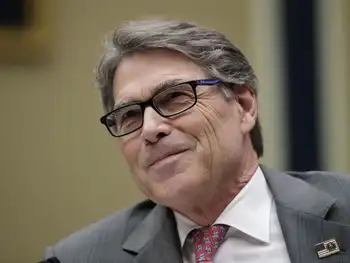China invests in ultra-high-voltage transmission
BEIJING, CHINA - State Grid Corporation of China will invest $75.8 billion for ultra-high-voltage transmission projects with a total length of 40,000 kilometers in the next five years, according to Zhenya Liu, the general manager of State Grid Corporation of China.
By 2015, a strong nationwide grid, comprised of "three latitudinal and three longitudinal" ultra-high-voltage AC transmission projects and 11 ultra-high-voltage DC transmission projects, will be established in China.
Because of a recurring shortage of coal transportation capacity in China, it is necessary to attach equal importance to both coal transmission and power transmission, said Liu Zhenya at the groundbreaking ceremony for the expansion of the first ultra-high-voltage transmission line in both China and the world.
In the next 10 years, China's ultra-high-voltage grid should grow significantly. Power consumption and the installed capacity of power equipment in China is expected to reach 6.1 trillion kilowatt-hours kWh and 1,440 gigawatts GW, respectively, by the end of 2015. By the end of 2020, these values will rise to 7.8 trillion kWh and 1,760 GW.
Following the construction of large-scale coal-fired, nuclear and renewable energy-based power plants, it's expected that the inter-regional provincial power transmission will reach more than 400 GW by 2020. Therefore, accelerating the construction of the ultra-high-voltage grid is urgent, said Liu.
By 2015, the wind power and coal power generated in Inner Mongolia, Shaanxi and Hebei will be transmitted to northern, central and eastern China via the three longitudinal transmission passages. The northern coal-fired power and southwest China's hydropower will be transmitted to northern China, central China and the Changjiang River Delta via the three latitudinal ultra-high-voltage transmission passages.
Related News

Coal CEO blasts federal agency's decision on power grid
WASHINGTON - A decision by an independent energy agency to reject the Trump administration’s plan to bolster the coal industry could lead to more closures of coal-fired power plants and the loss of thousands of jobs, a top coal executive said Tuesday.
Robert Murray, CEO of Ohio-based Murray Energy Corp., called the action by the Federal Energy Regulatory Commission “a bureaucratic cop-out” that will raise the cost of electricity and jeopardize the reliability and security of the nation’s electric grid.
“While FERC commissioners sit on their hands and refuse to take the action directed by Energy Secretary Rick Perry and President Donald…




